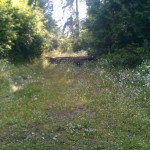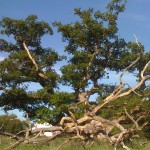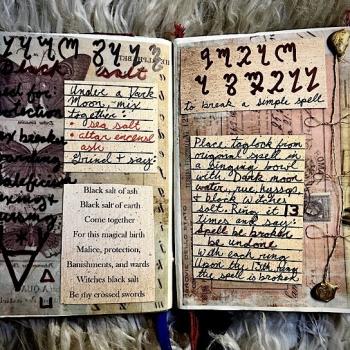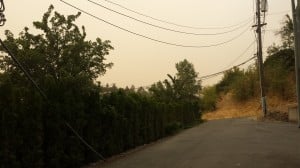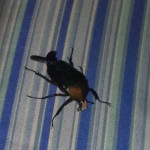My return to the U.S. last week felt disconcerting, but it’s rarely a smooth transition. The transatlantic flight leaves the body tired and the souls displaced. Confronting American culture feels loud and intrusive. Arriving on the day of the Connecticut shootings meant that news of the heart-wrenching tragedy blared from screens throughout the airport. I sent prayers for the suffering; however, I did not wish to listen to the sensationalized reporting. I searched for a space to rest and bring all my parts into the present place. Escaping the drone of the screens was near to impossible, so I used my tools.
The ability to connect and be present in the midst of chaos is important. I first cultivated this skill while living in my cup-runneth-over-house with four Little Bigs. I sharpened and honed this tool living within the constant pulse of the city. Connecting with Place–the ground beneath my feet–in the city required more than foundational grounding and centering. It required research, digging, and the courage to change.
All those years ago when I struggled to hear this land’s voice — this bit of earth under the layers of asphalt and concrete; the cacophony of road noise woven with live music; the fabric of cowboy boots and hipster plaid — I longed to feel the heart connection I’d felt in the country. After engaging in the following practices I found the love and appreciation I sought: a connection with this sauntering, swaggering city called Austin.
Myth
Discover the pre-history of your place. Which other-than-human persons once lived on the ground beneath your feet, and now rest within its substrata? Many of us learned this information in school, but for those who have migrated it’s important to acquaint yourself with the beginnings of the land you now call home. Visualize those waves of ancient migration, the flora and fauna, and expand out a few paces to notice the patterns and story that emerge. Let the land tell you its stories.
Geology
You don’t need to be an expert, but learn a thing or two about the primordial shaping of your Place. What forces created the significant landmasses? What type of rocks lie under or within your topsoil (do you have topsoil)? Often it’s difficult to imagine soil under the asphalt and concrete, but it’s there. I like to imagine the roads and sidewalks as band-aids (plasters) covering the skin of the Earth. I then stand on sidewalk and grass in turn, while holding this image. Try it!
Weather
Many pagans base their ritual year around a seasonal procession not in sync with their local weather patterns or agricultural year. Do you utilize seasonal change within your system of praxis? Why not craft a localized ritual year?
Central Texas does not follow an 8-fold wheel of the year. The first time I broke with the revered British tradition was nerve-wracking. ‘Everyone else’ was doing it the ‘traditional’ way. I was afraid that being an outlier within such a fringe subgroup as ‘paganism’ would push me into Lonely Land. It didn’t, though my personal practice no longer matches that of the wider community. But hey, I’m a witch and well used to being different!
History
Do some research on the human history of your city. When did the First People arrive, and what about Europeans? There are often amazing, heroic, tragic, and humorous stories associated with the settlement of our cities. Dig them up!
This is a fun step, and another realm of myth-making. Who were the archetypal Mothers, Warriors, Wise Women and Men, or Tricksters? I loved discovering the stories of Austin. Texas was already rich in mythic imagery, so I was delighted to learn of the Austin buffalo hunt, Mrs. Eberly and her cannon, and the house of ‘ill repute’ in my neighborhood.
Don’t shy away from People
Cities are the anthills of humanity, areas of condensed human creativity and enterprise. Some of us are introverts and need to carefully craft our excursions, but don’t let that deter you from connecting with other humans. Get out and meet your fellow ‘ants’! This makes us feel grounded in our physical place, as opposed to a fantasy land of our imagining.
Get out of the box
Get out of your house, your car, your office, your coffee shop. Get your body out of the center of the anthill and up on the surface where the sun shines and the wind tousles your hair.
The most important step for me in building a sense of place within an urban environment, and a major turning point in my relationship with the city, was selling my car and buying a commuter bicycle. My first commute to work was an epiphany. Each garden I passed was a unique scent experience. I became intimately acquainted with the environment by stepping outside my box, by removing the barrier.
Visit Landmarks
While you are out experiencing the plants, weather, and other-than-human creations in the city, visit the sites that commemorate the history and myth of the area. These stand as temples and altars of our urban landscapes.
Eat Local
Put into your body the produce of your bioregion. We are what we eat– literally.
Contribute
You are part of the anthill that is your city. Find your work; your part to play; your art; your unique offering, and Do It! Contribute your time and energy to the activity and organization of the human city. By getting involved you become invested–you feel connected to others who are part of Place.
Embrace Your Humanness
Finally, relish your humanness. We can be pretty amazing animals. While the countryside is the anthill of…well, ants, the cities are our places. These wondrous works deserve our active participation. We can make them better than we ever dreamed, but only if we engage and connect: with ourselves, the humans around us, and our other-than-human neighbors.
Go forth–be fully present in your location, and Cultivate Place!


